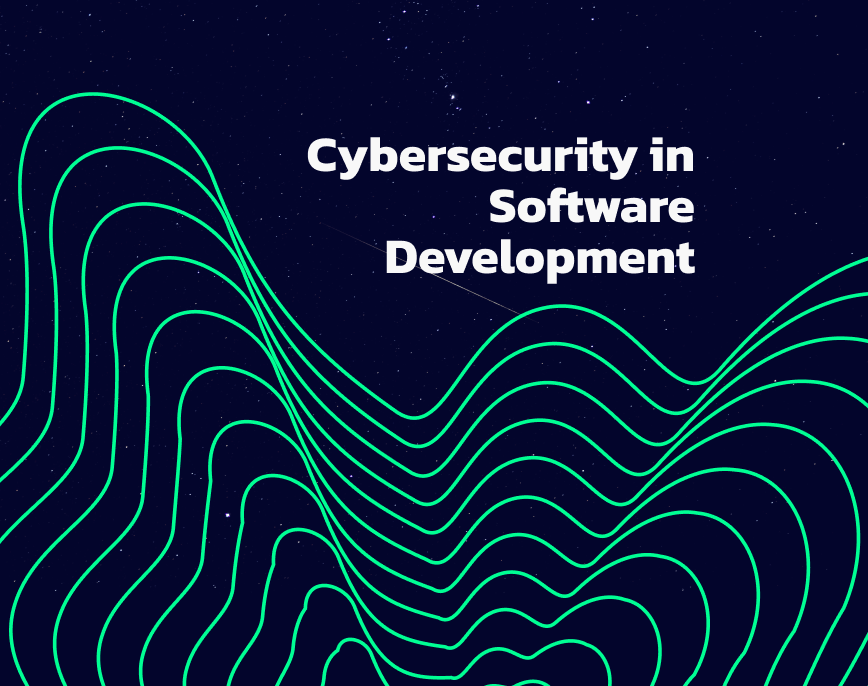Cybersecurity in Software Development: Best Practices and Emerging Trends
Written by
Krista Alvarez
Published on
March 27, 2024
Time reading
4 minutes

The software we rely on every day, from the apps we use in the morning to the complicated financial structures that keep economies running, needs a guard. In today’s digital landscape, that defender is strong cybersecurity. As technology progresses, the strategies used by evil individuals to attack security weaknesses are also progressing. Security gaps can be catastrophic, revealing sensitive facts and destroying customer trust.
At Visiblemagic, we understand cybersecurity’s critical role in improving and deploying software program solutions. Our commitment to excellence goes far beyond simply functionality; it includes the protection of our client’s valuable assets and private information. So, how can developers build packages that can be stable with the help of design for you to strengthen cybersecurity defenses?
Here are some key practices to integrate into your workflow.
Secure coding practices
Building strong and stable software starts with the code itself. By following sound coding practices, developers lay a solid foundation that mitigates common security weaknesses consisting of data injection attacks, cross-site scripting (XSS), and insecure deserialization. Techniques such as input validation, output encoding, and proper error management now strengthen code against attacks and contribute to the application’s overall reliability and stability.
In addition, incorporating security-related coding standards and frameworks, along with the Open Web Application Security Project (OWASP) guidelines, ensures that protection remains a concern throughout the development process.
Regular security scanning and testing
Recognizing that security is a continuous technique, organizations need to perform regular protection audits and testing to maintain the health of their systems. Penetration testing, security scanning, and code evaluation are essential components of this system, allowing groups to identify and remediate capability weaknesses before they can be abused by attackers.
In some cases, automated tools and systems can optimize the testing process and provide real-time insight into the security posture of the utility and infrastructure.
Implement multi-factor authentication (MFA)
In today’s risk landscape, passwords alone are no longer sufficient to protect sensitive records and sources. Implementing Multi-Factor Authentication (MFA) provides an extra layer of security by requiring customers to provide multiple forms of authentication along with a password and one-time code sent to their registered device. This significantly reduces the threat of unauthorized access, even in the event of compromised credentials, improving the basic security level.
Adopt DevSecOps practices
DevSecOps integrates security into every stage of the software development lifecycle, from design and development to deployment and renovation. By building protection concerns into automated development pipelines, companies can proactively identify and address weak points early in the process, minimizing the risk of security breaches in production environments.
Collaboration between development, operations, and protection teams fosters a subculture of shared responsibility where protection is not an afterthought, but an essential part of the improvement process.
Zero Trust Architecture
Traditional protection methods are not sufficient to defend in opposition to advanced cyber threats in today’s dynamic and decentralized computing environments. Zero Trust Architecture operates on the precept of “by no means accept as true, constantly verify,” requiring continuous authentication and authorization for every person and device attempting to get the right of entry to resources in the community.
By imposing detailed get entry to controls, encryption, and micro-segmentation, groups can restrict the scope of capacity breaches and incorporate any unauthorized hobby in the community.
AI and machine learning
Artificial intelligence (AI) and machine learning (ML) technologies offer advanced ways to improve cybersecurity defenses. From anomaly detection to predictive analytics, these tools enable organizations to detect and respond to security threats in real-time, enabling security groups to stay one step ahead of cybercriminals. By utilizing AI-driven answers for risk intelligence, behavioral analysis, and automated incident response, organizations can strengthen their resilience in opposition to advancing cyber threats and reduce the impact of protection failures.
The software supply chain
With the increasing reliance on third-party dependencies and open supply libraries, ensuring the safety of the software program supply chain is important to maintaining the overall safety position. Implementing measures consisting of software program composition analysis, dependency monitoring, and weak spot management enables groups to discover and minimize capacity dangers delivered by the use of third-party components.
By setting up clean policies and methods for reviewing and handling software dependencies, agencies can minimize the chance of supply chain attacks and protect the integrity of their software program packages. In addition, keeping an inventory of software program belongings and setting up stable communication channels with trusted suppliers improves visibility and duty throughout the supply chain environment.
Conclusion
By including these nice practices and technologies in cybersecurity practices, your company can strengthen its defenses, reduce the danger, and guard their valuable assets from cyber dangers. However, it’s essential to realize that cybersecurity is not a technology that fits all; instead, it requires a proactive and layered approach to defense that is tailored to each employer’s specific needs and requirements. Through continuous education, collaboration, and funding of the latest technologies, companies can stay ahead of rising risks and protect their digital resources in an increasingly interconnected world.